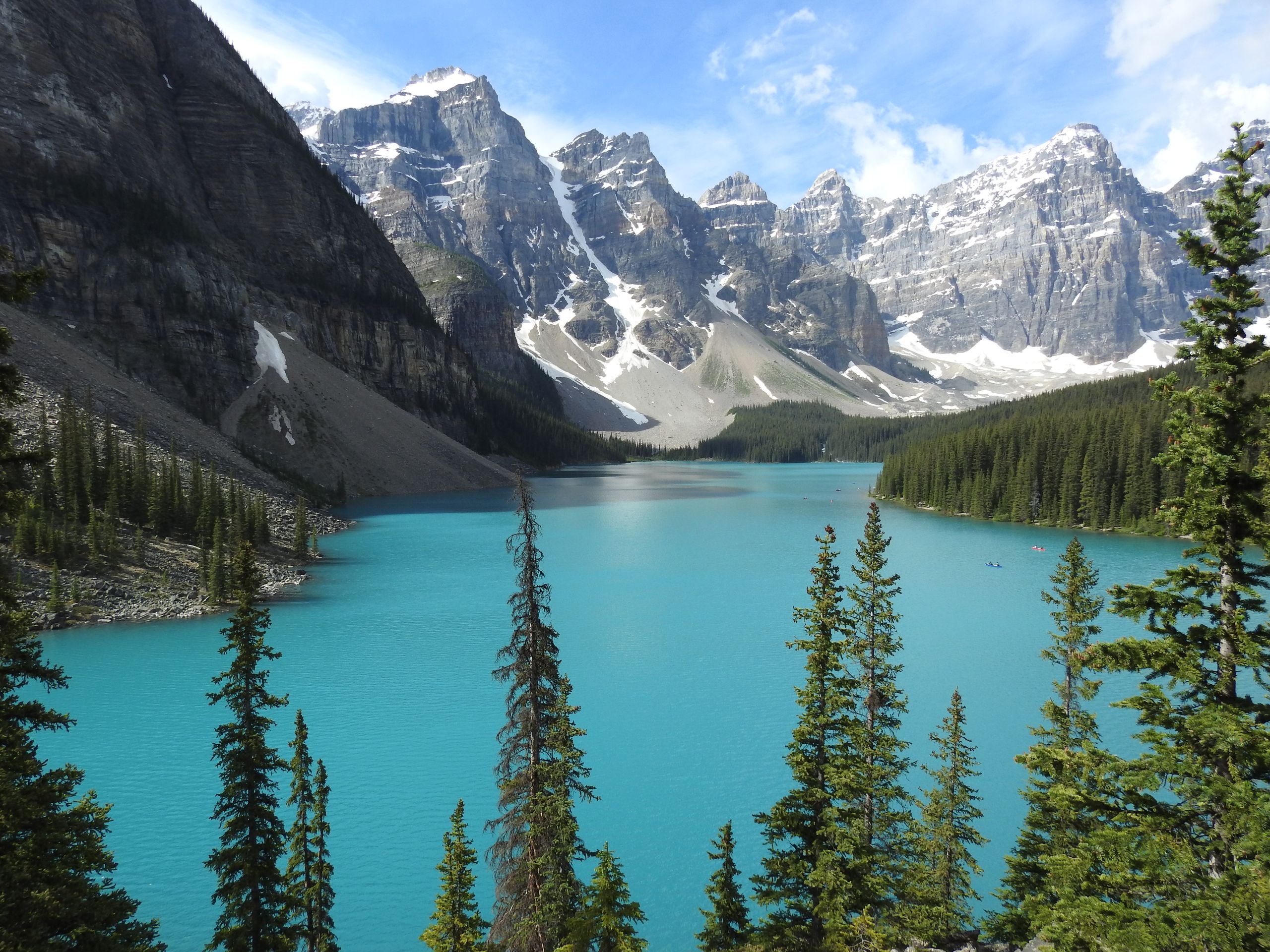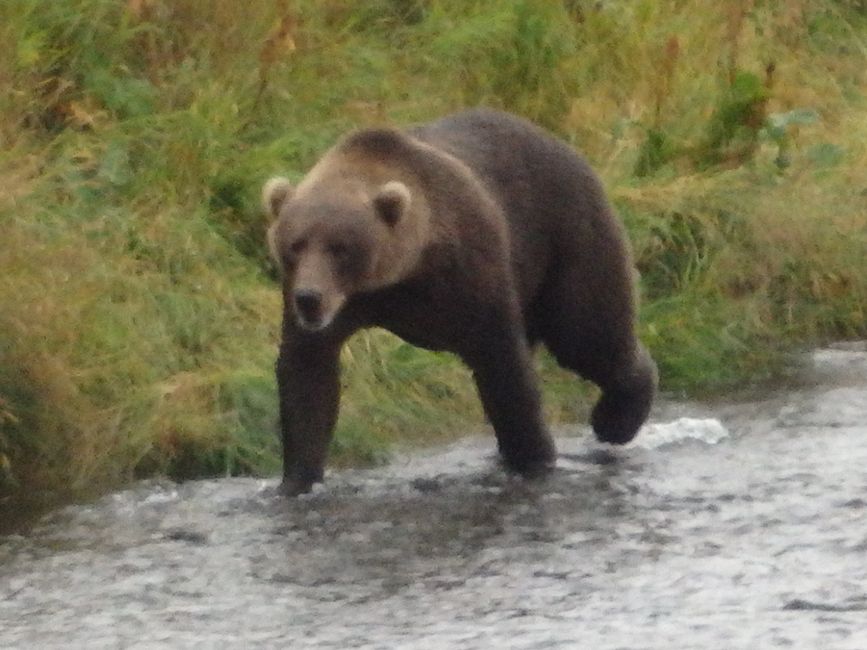BLOG 14 - Dawson City
Veröffentlicht: 15.08.2022
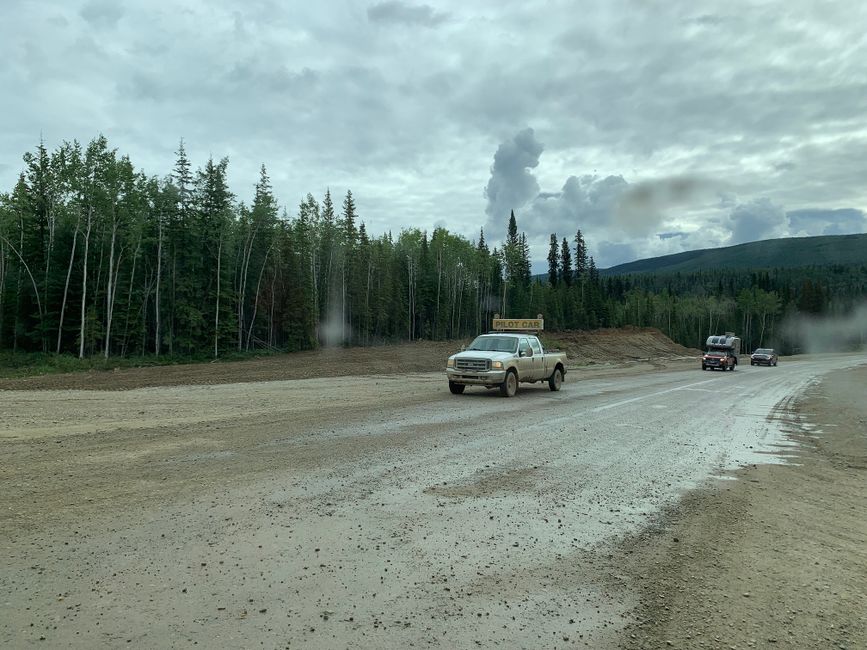
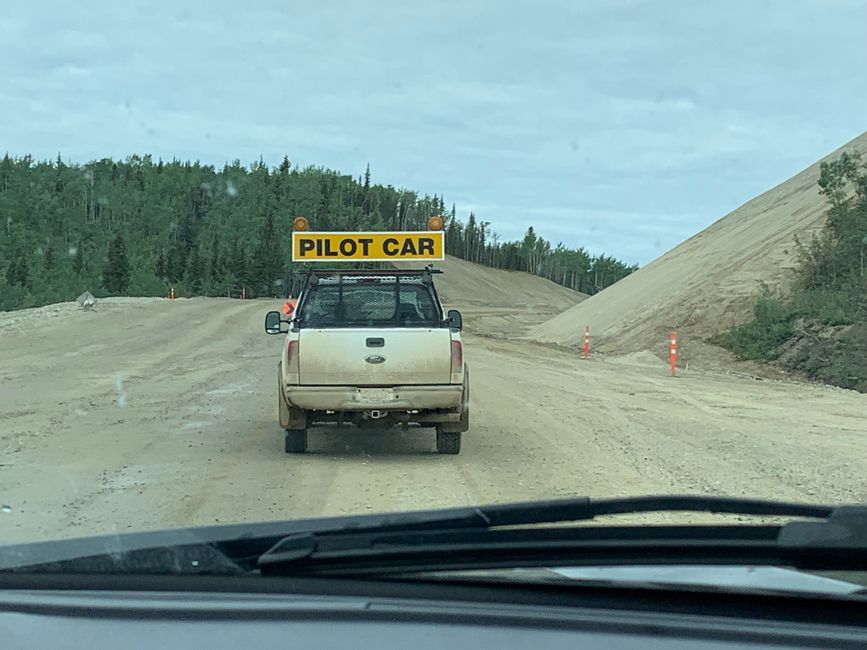
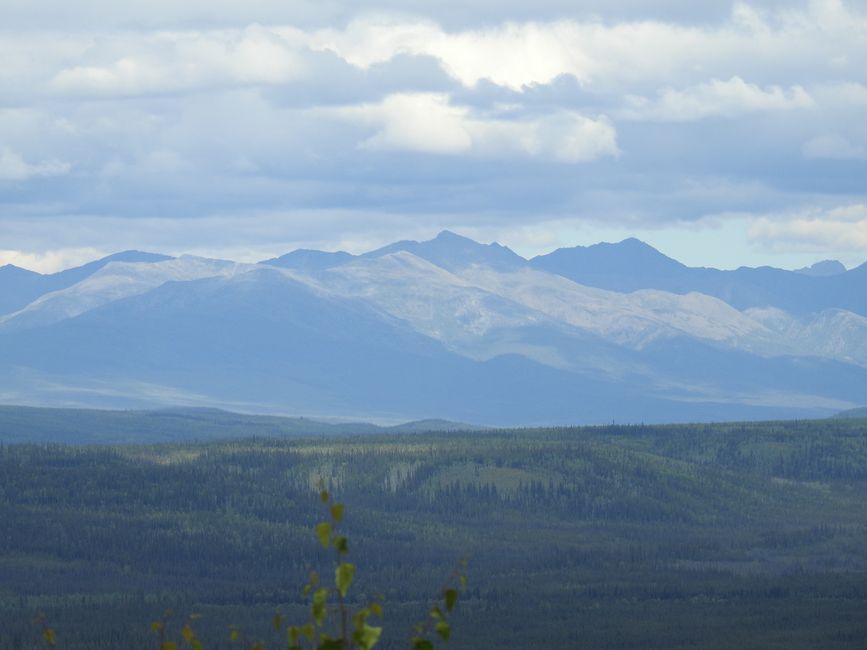
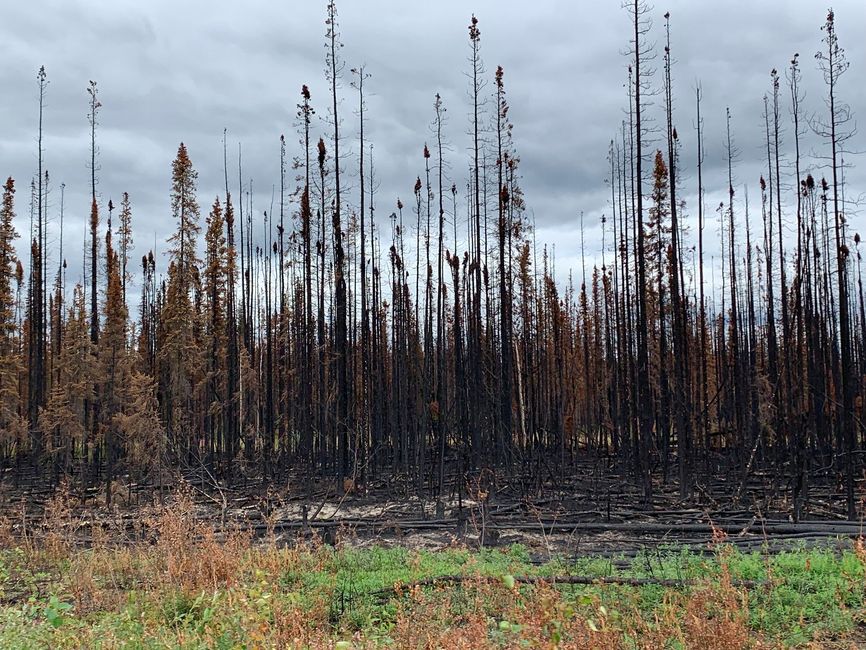
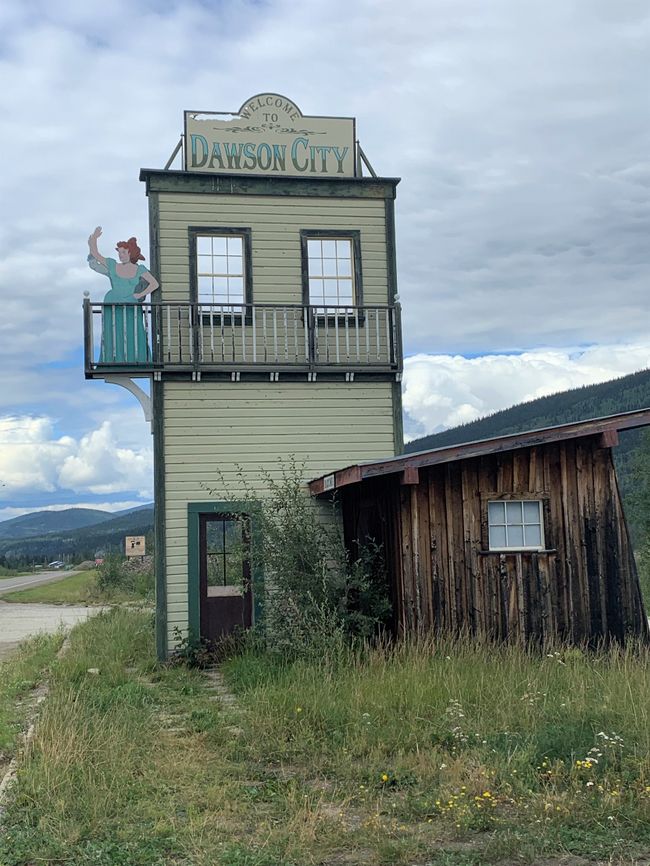
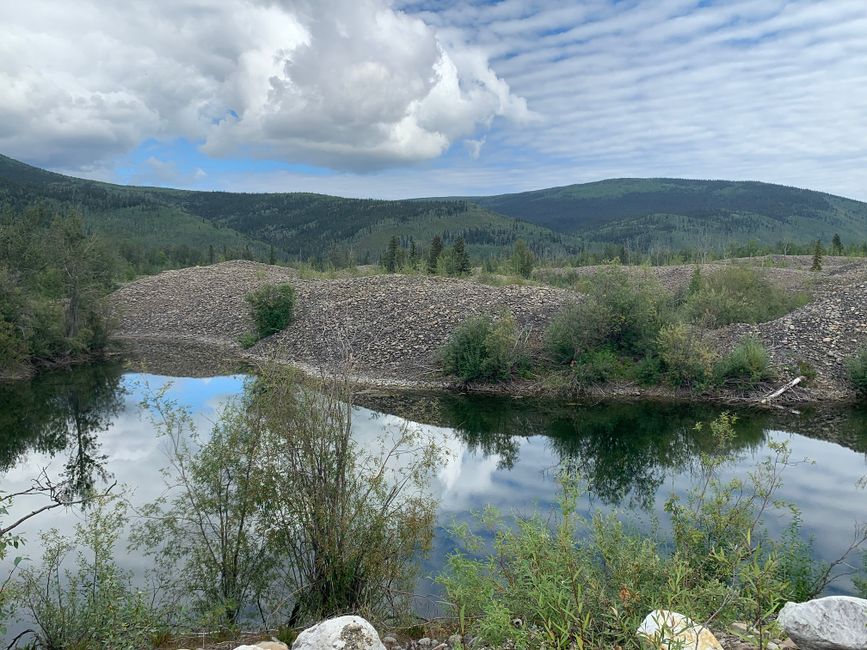
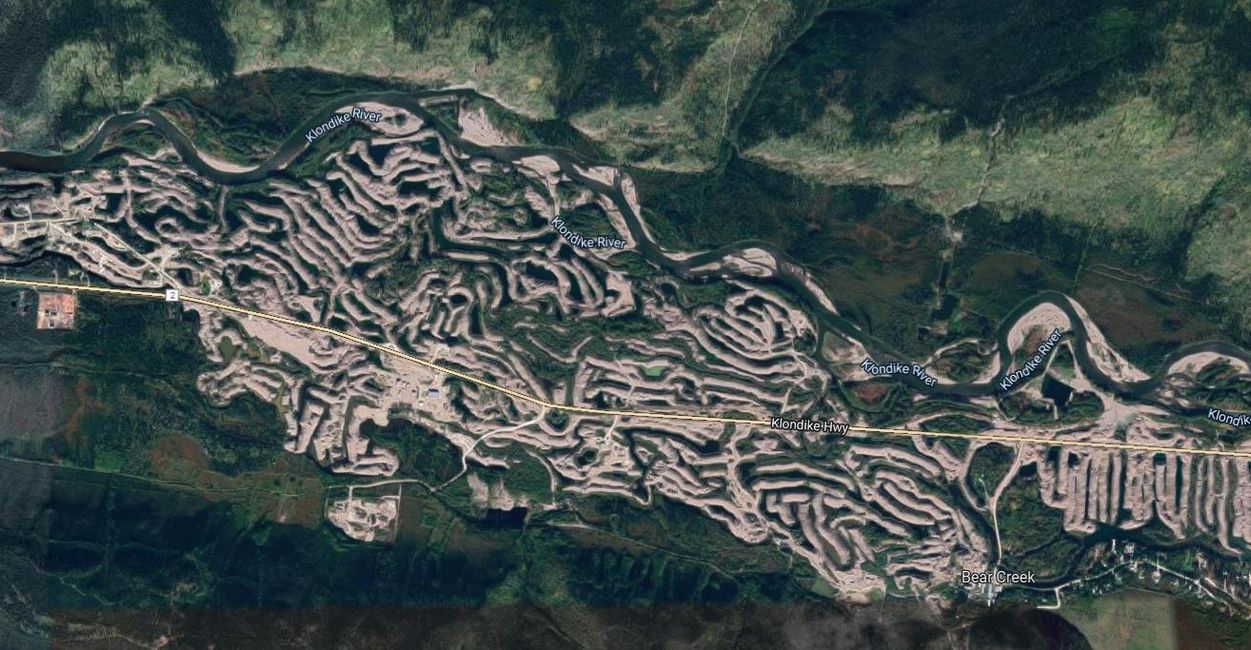
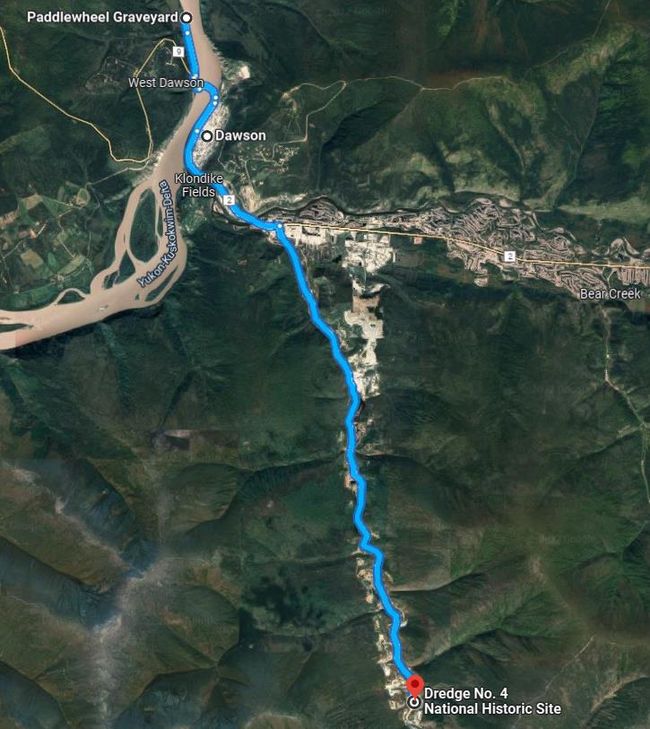
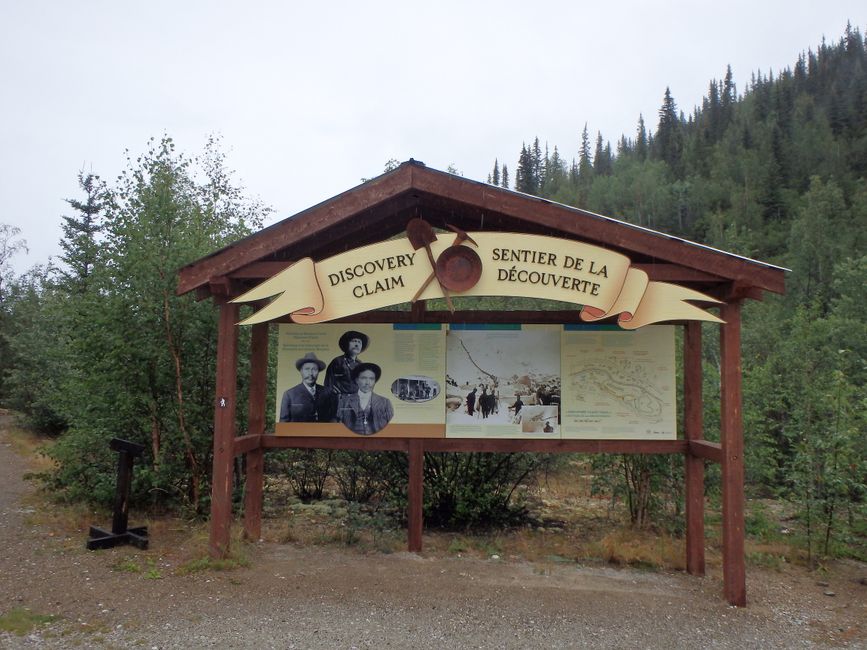
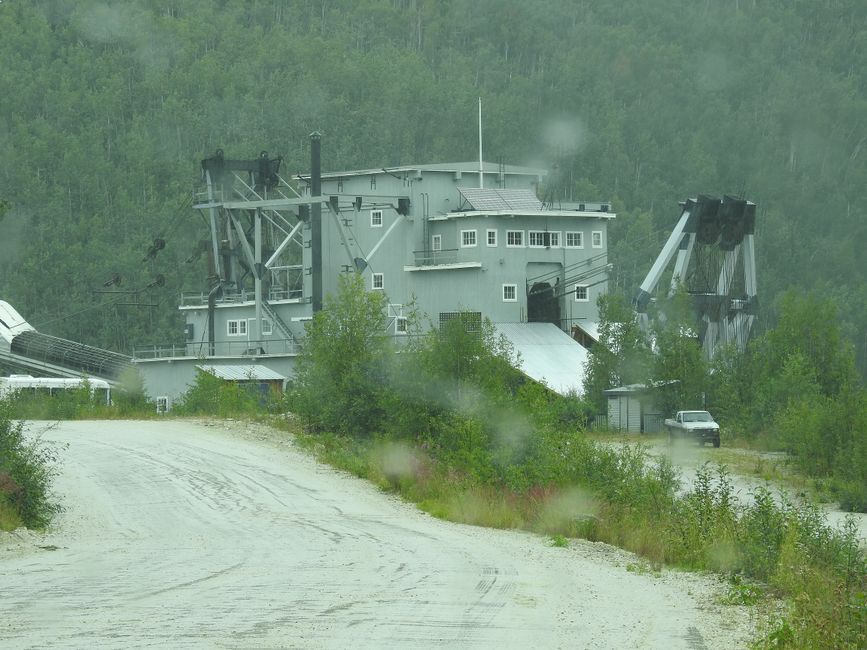
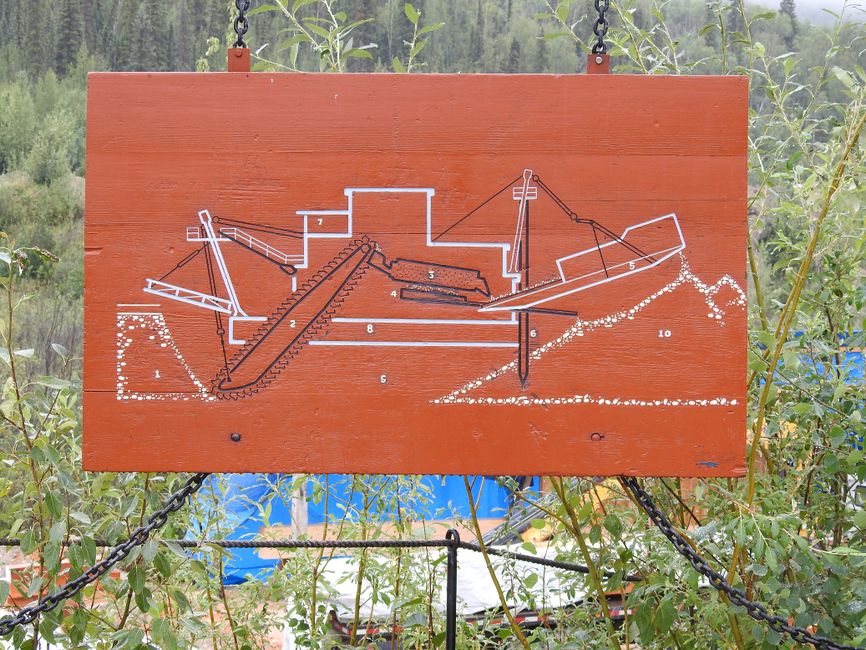

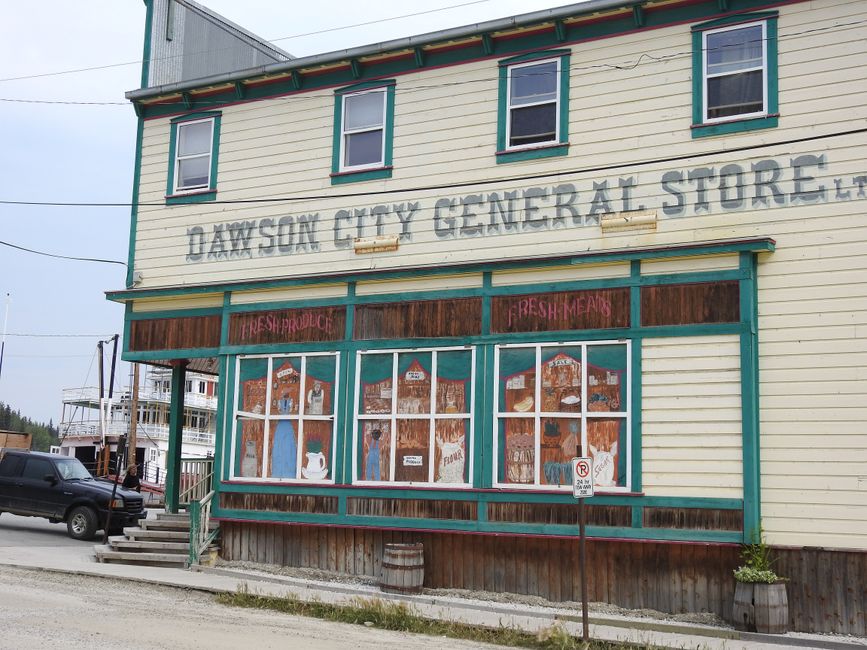
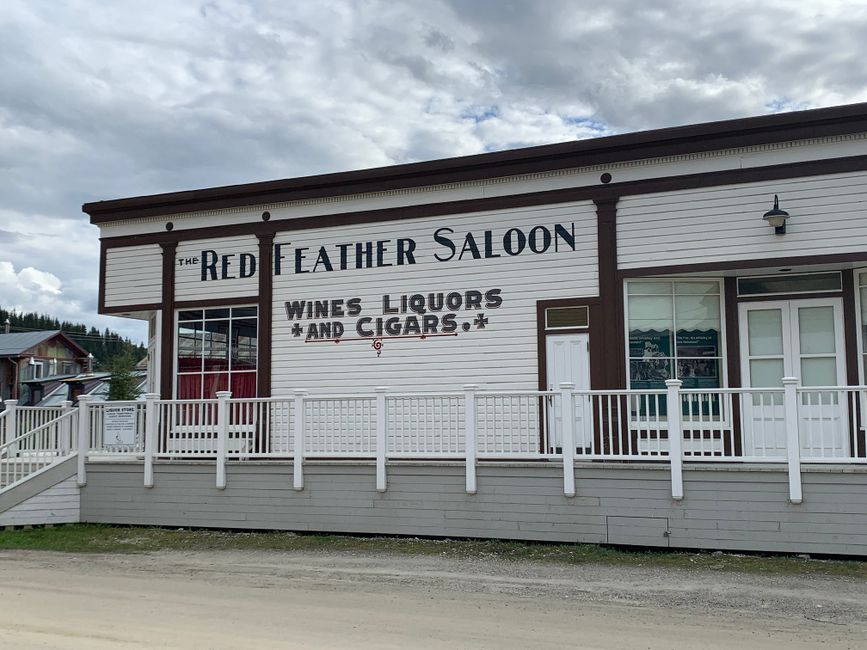
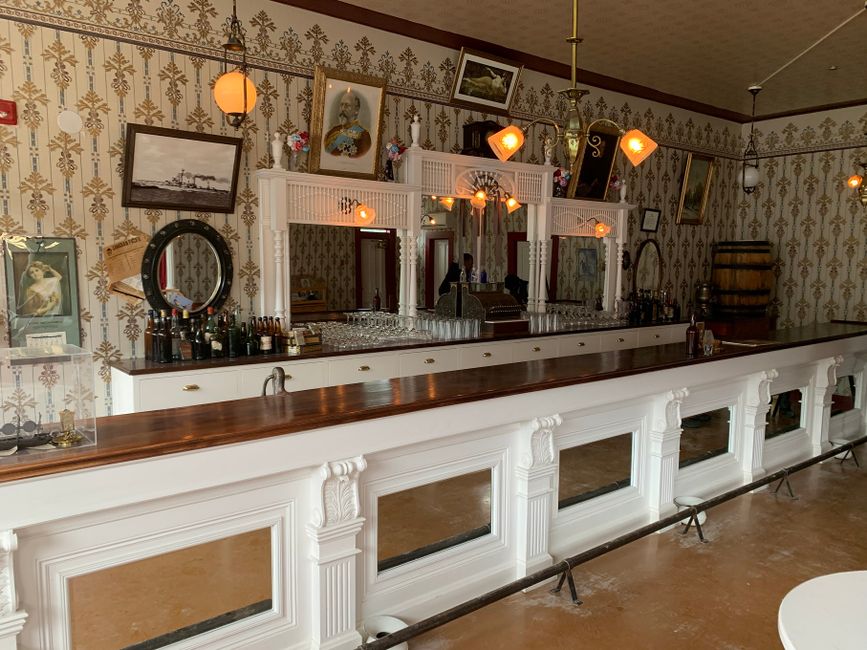
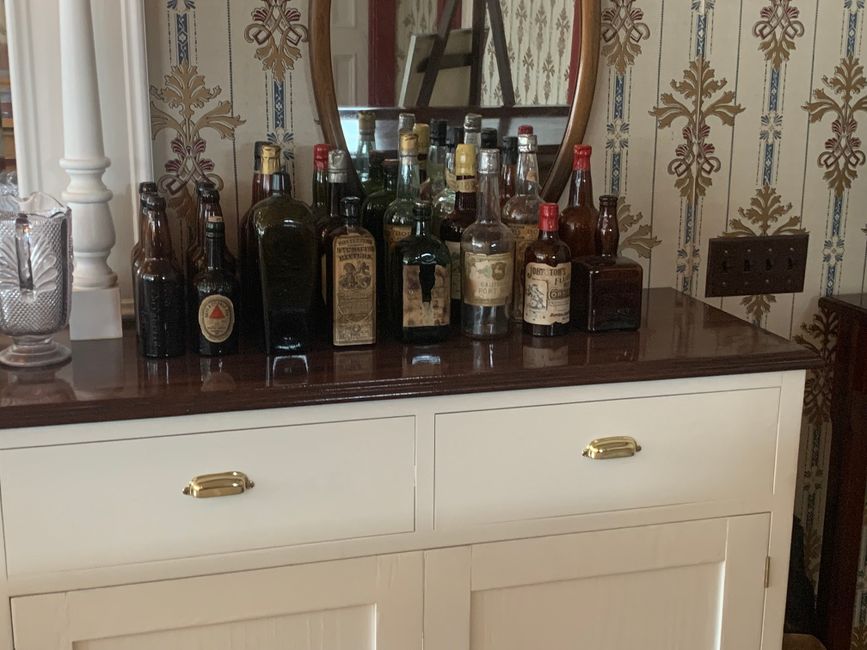
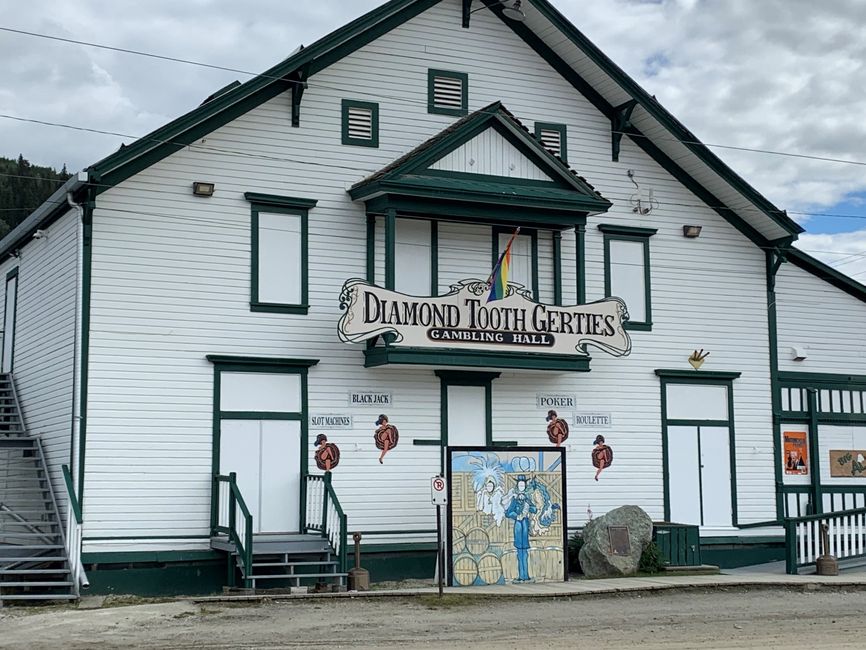
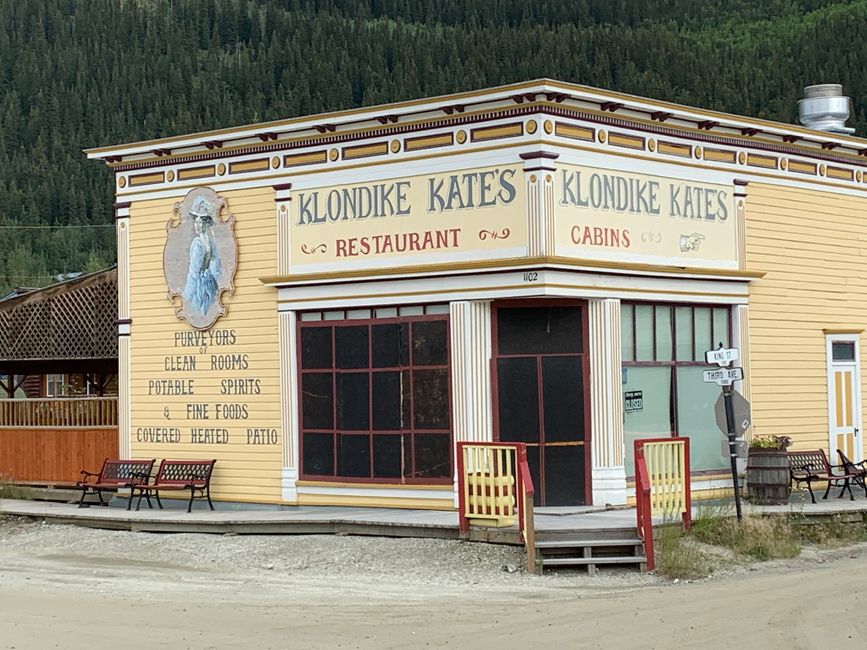
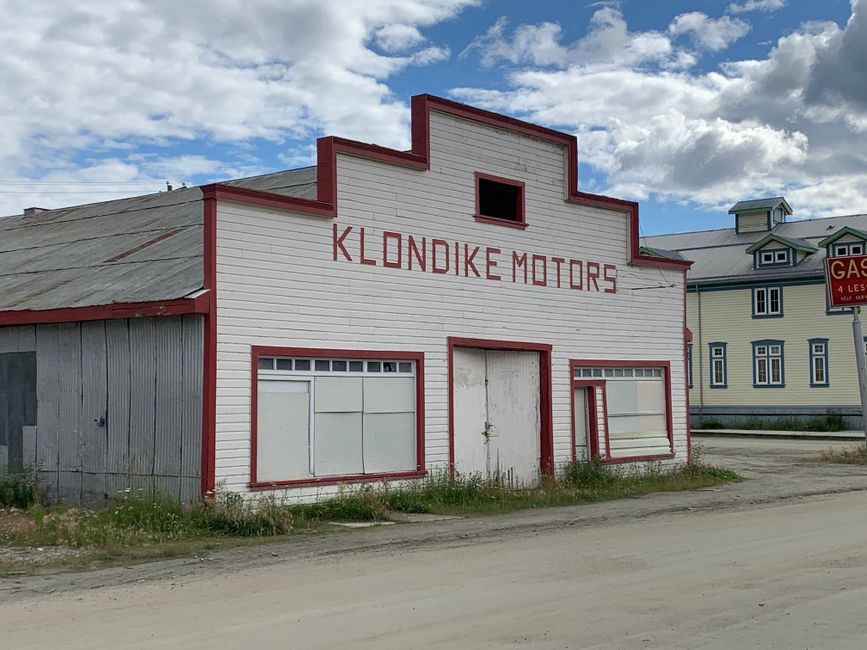
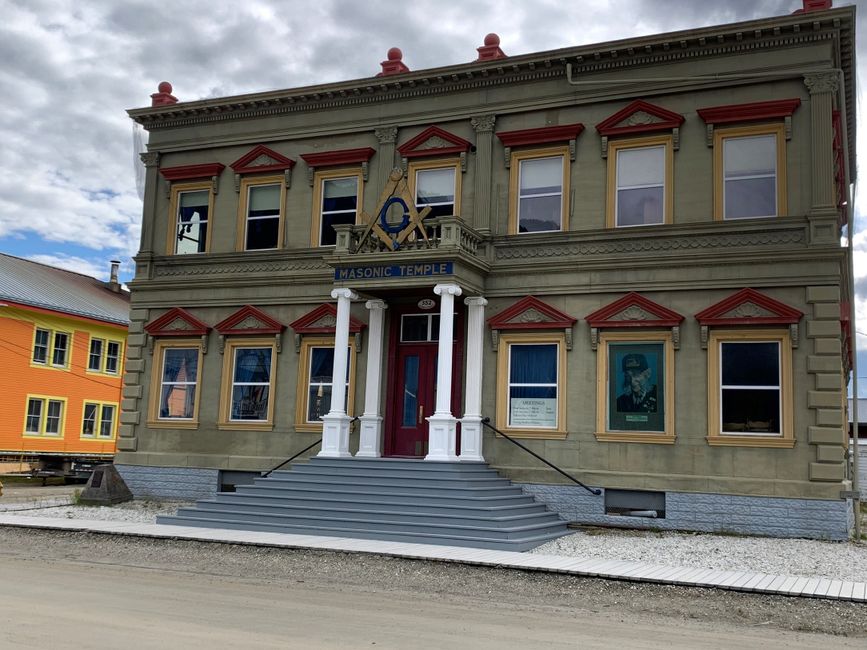
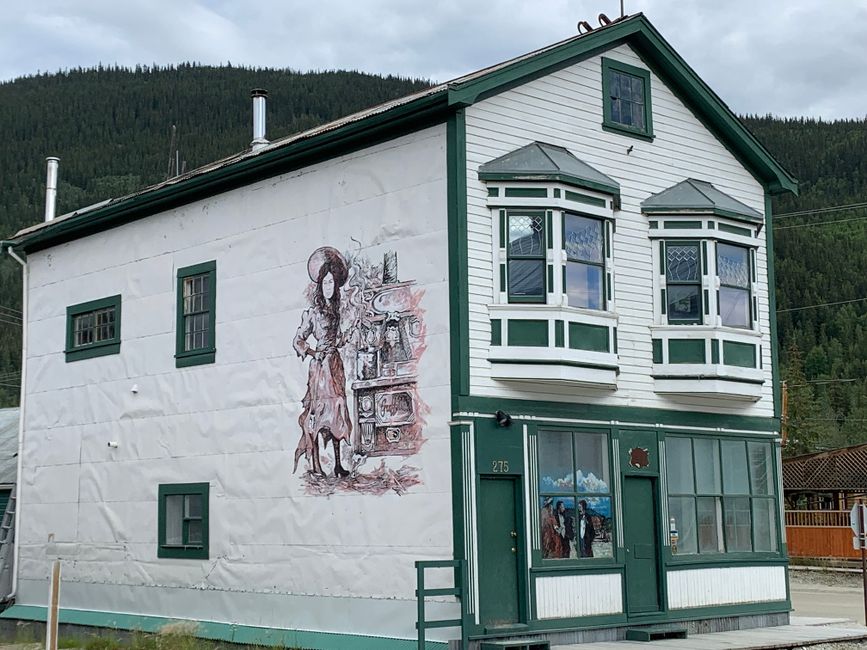
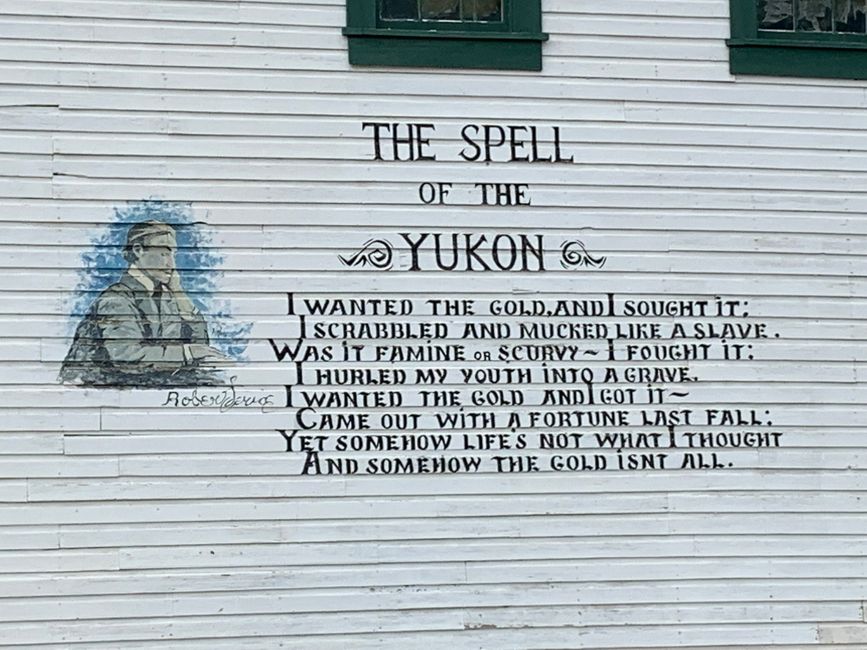
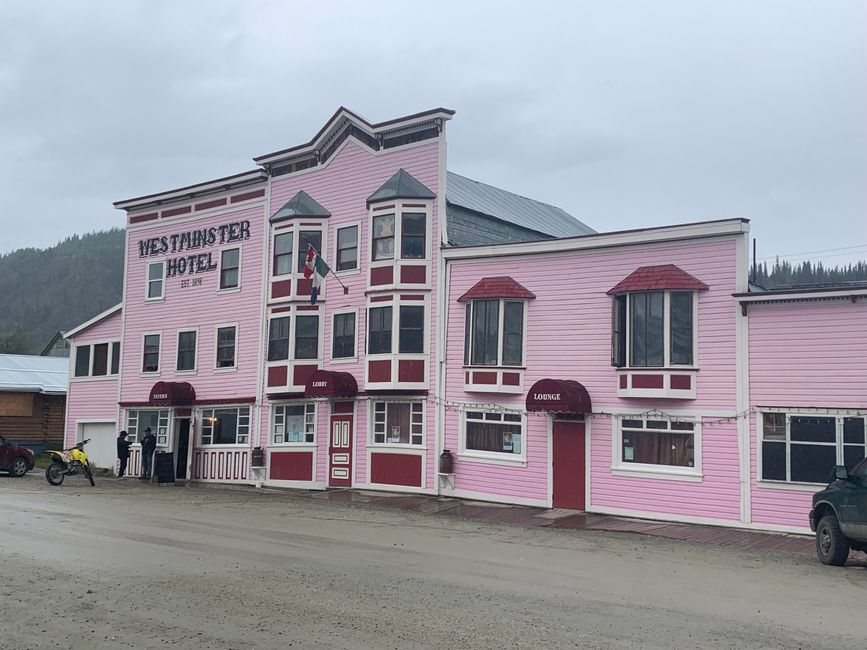
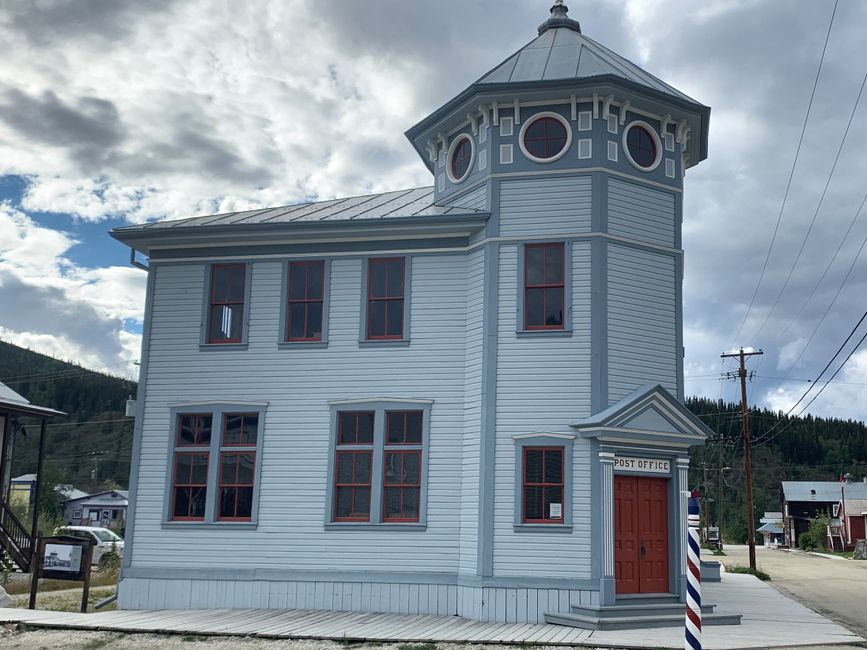
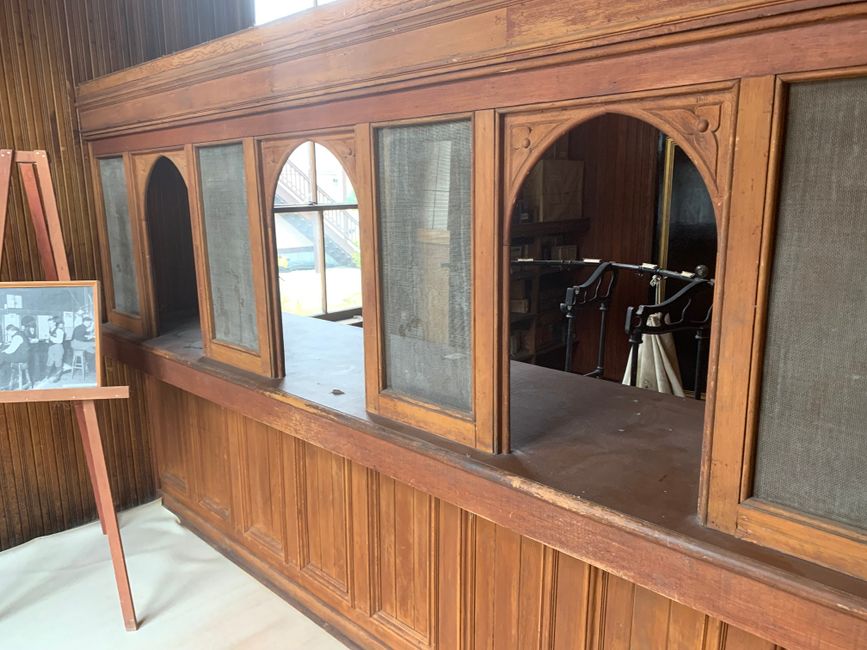
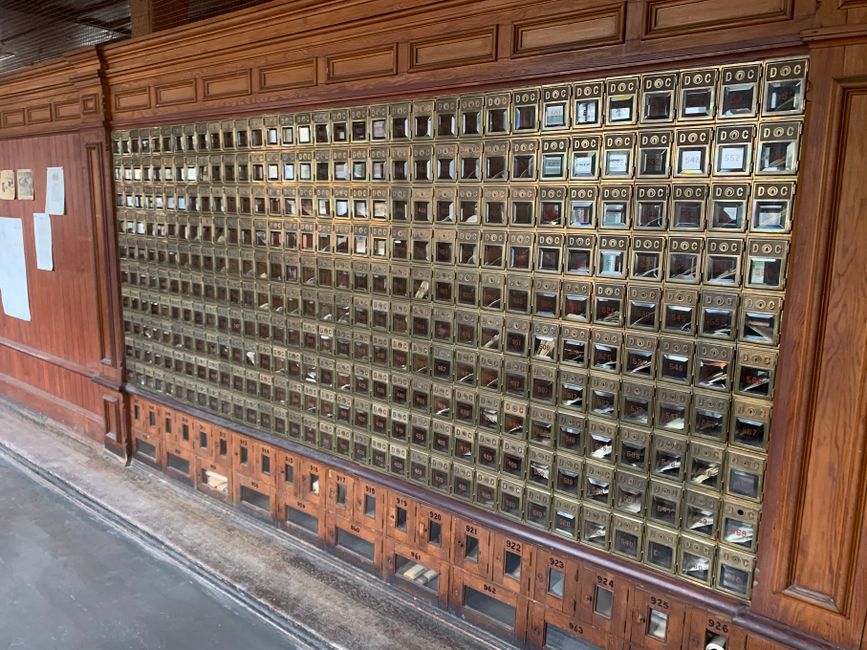
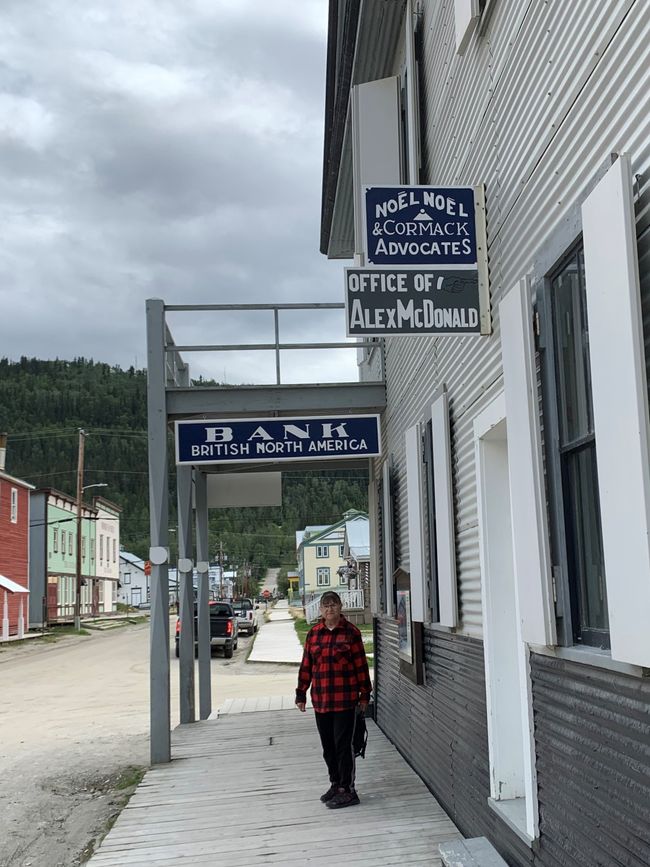
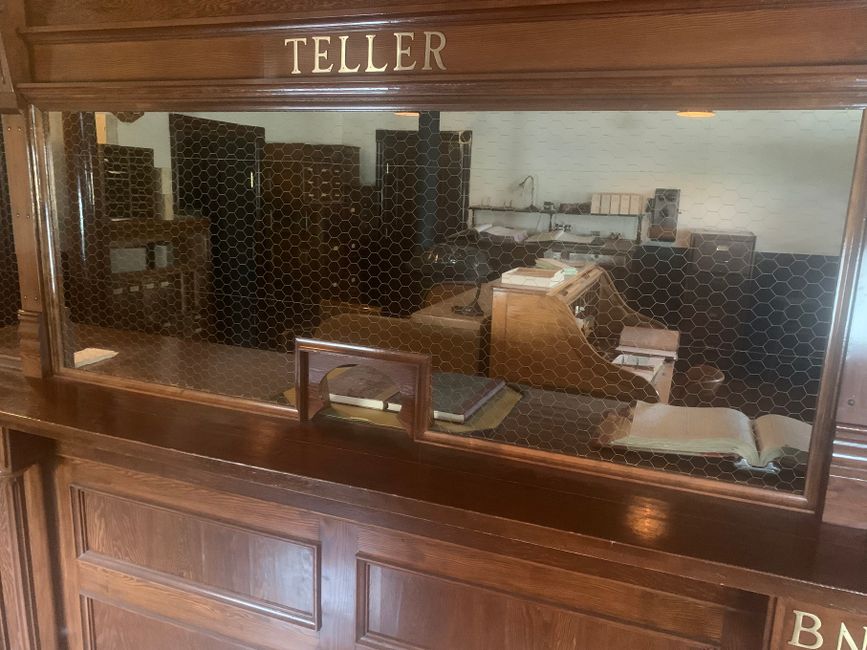
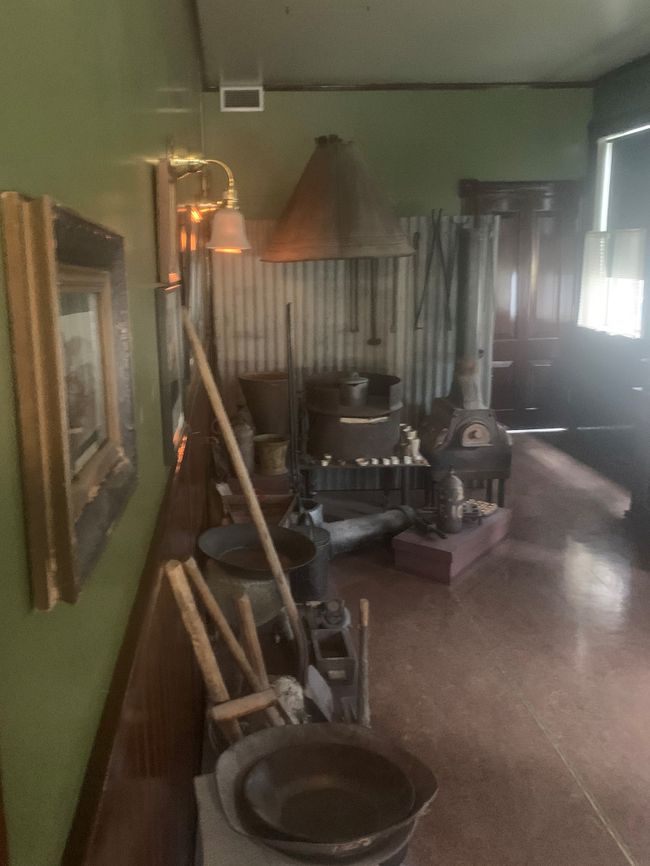
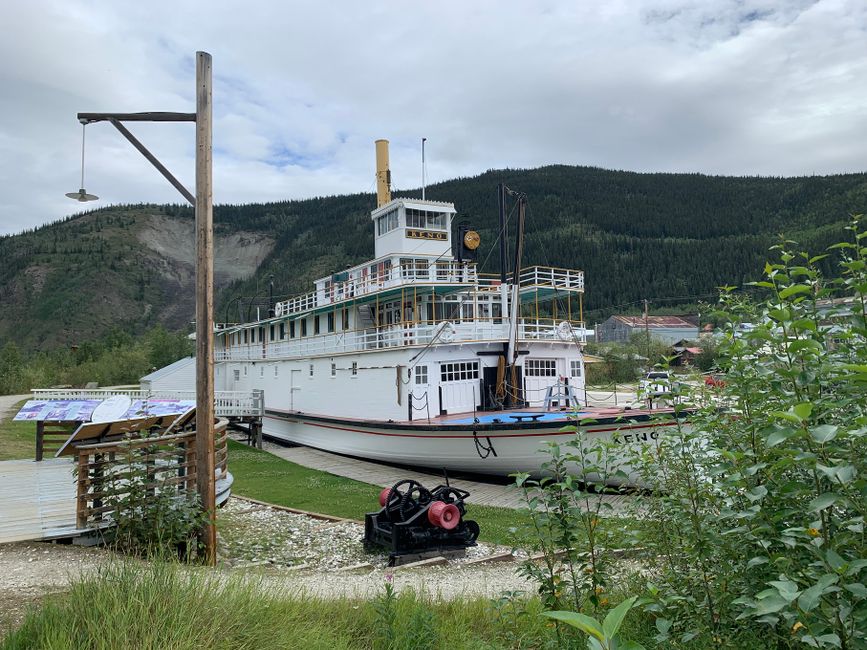
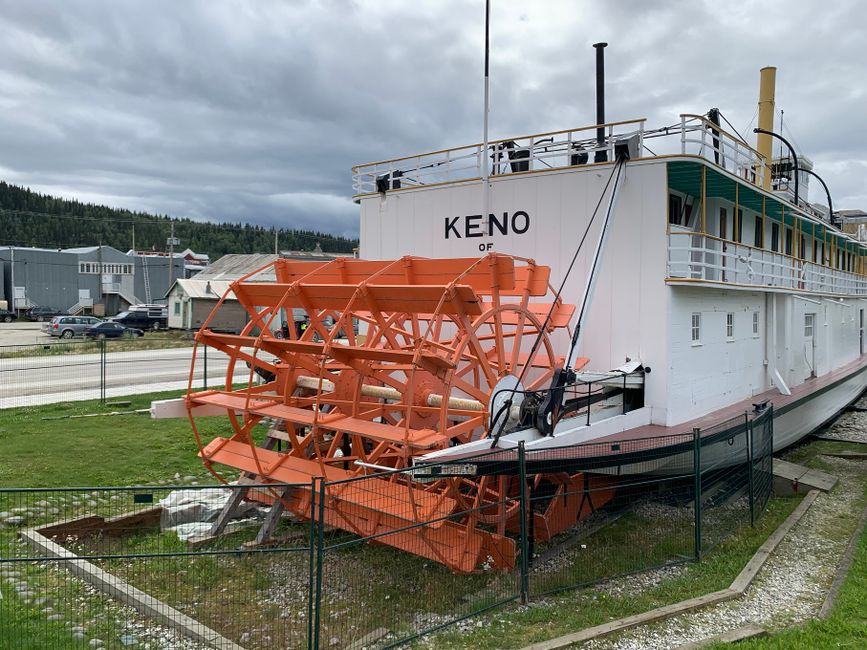
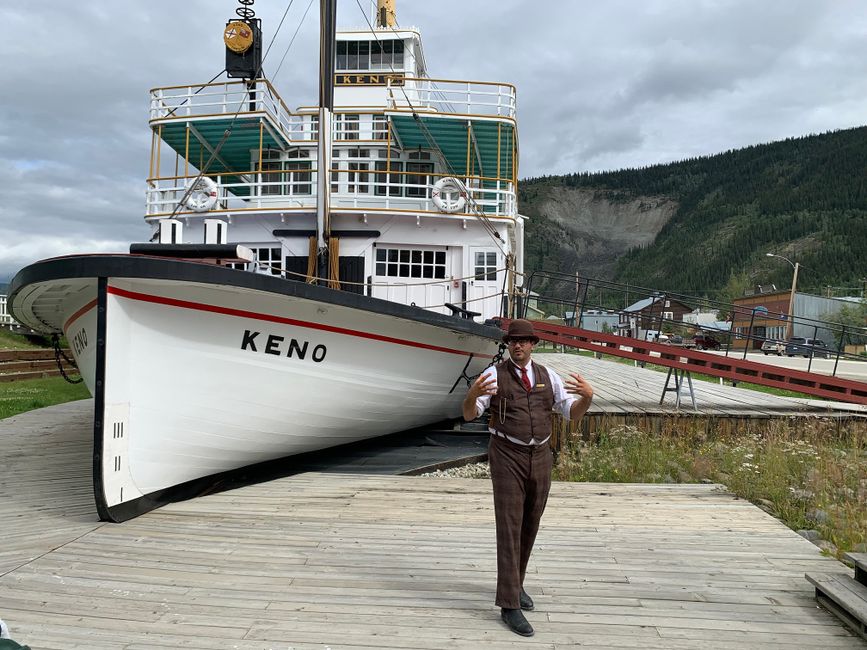
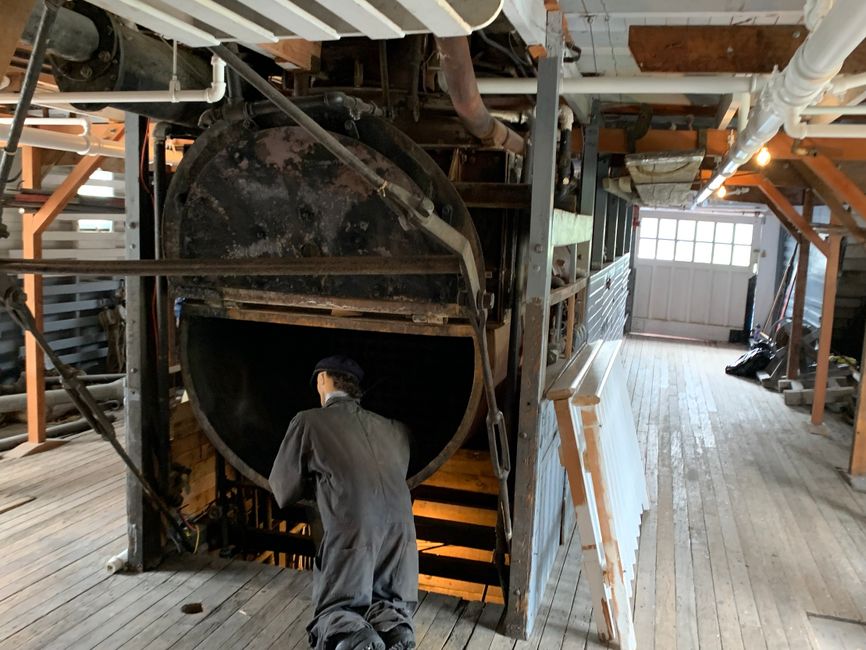
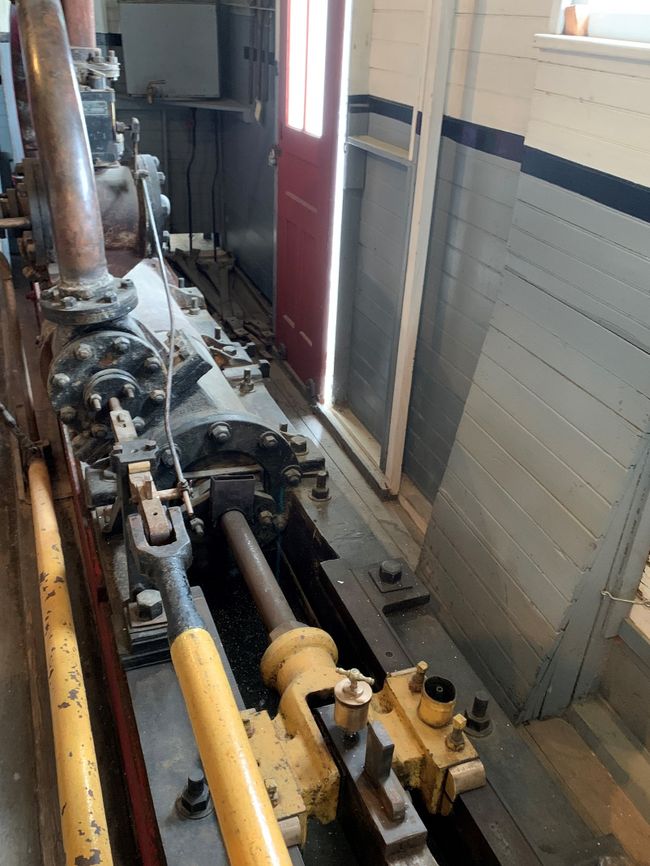
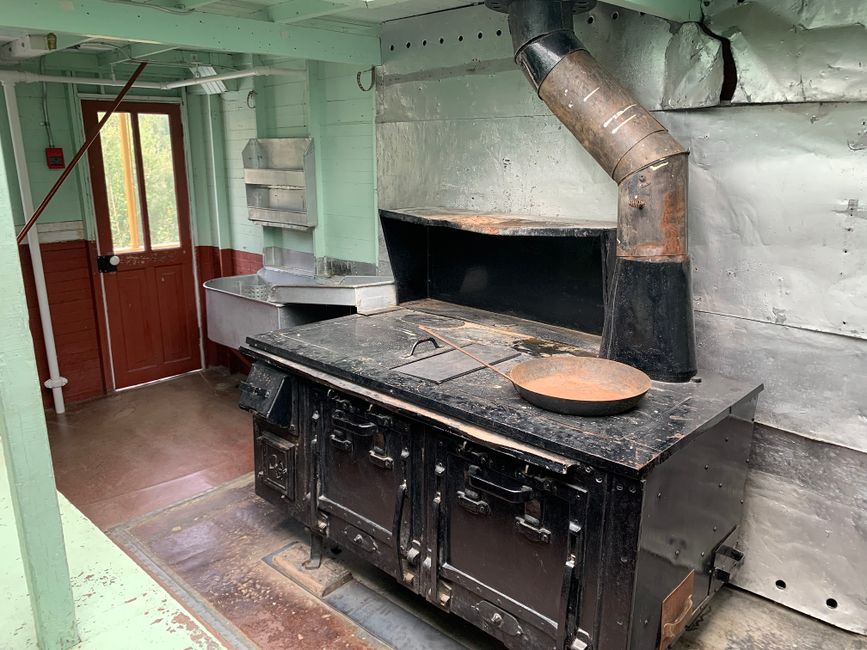
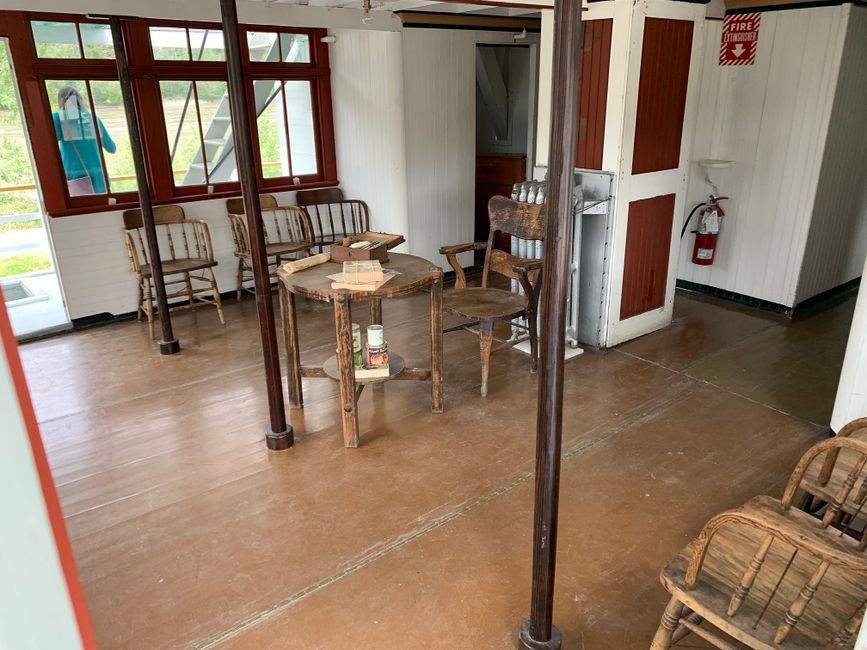
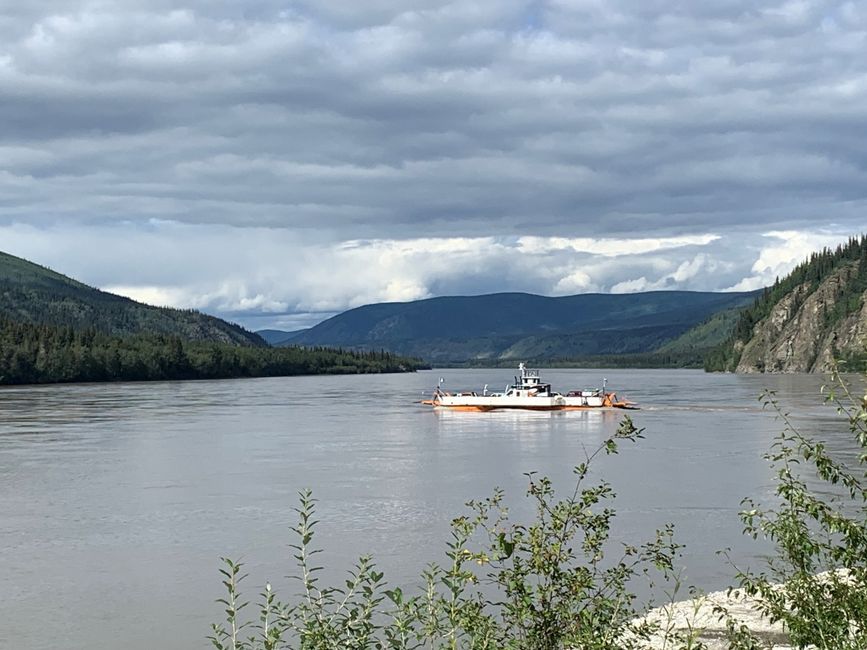
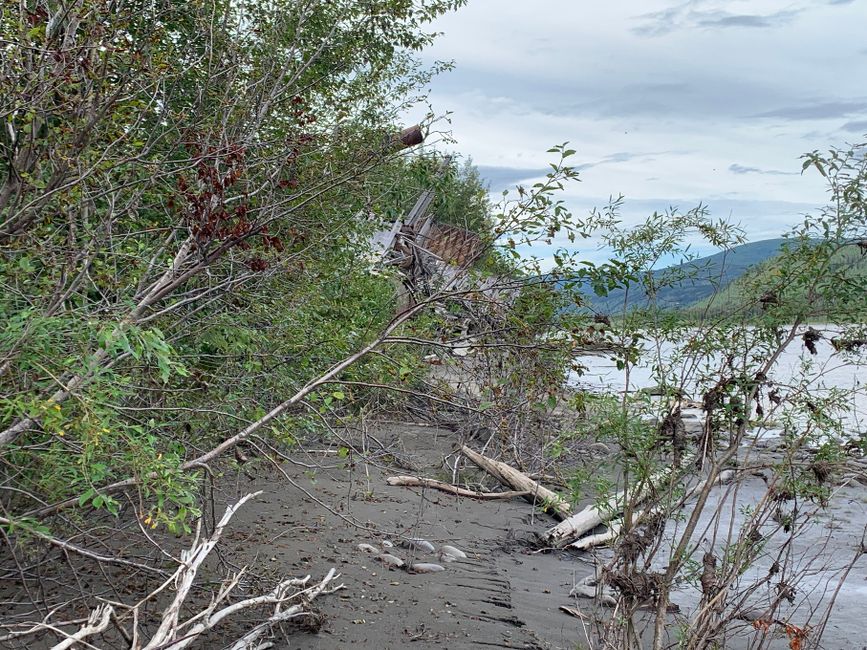
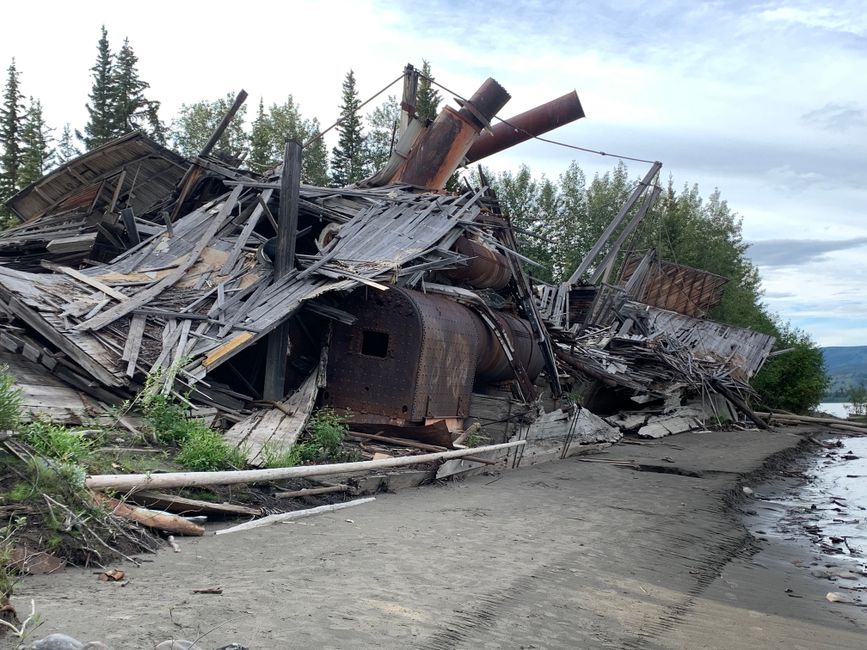
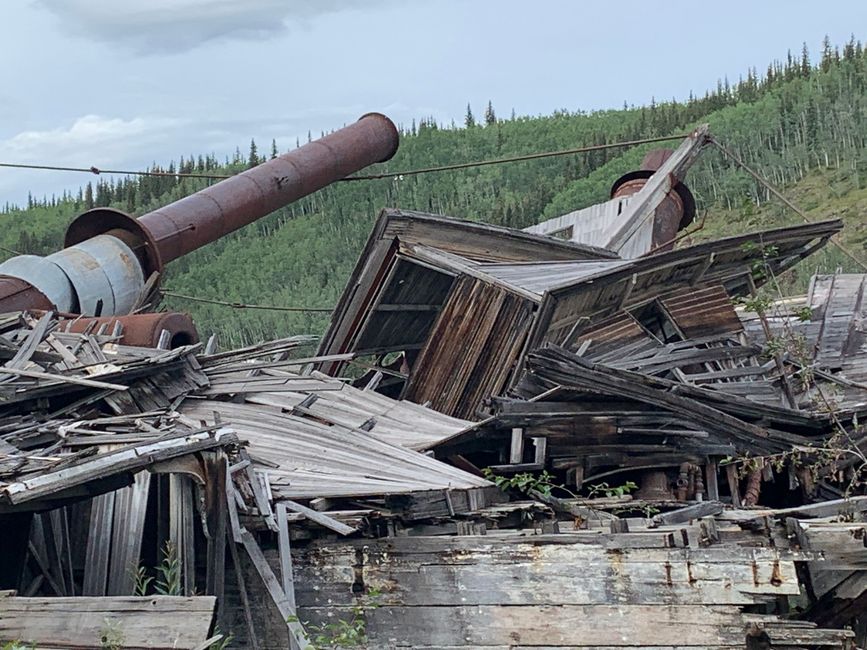
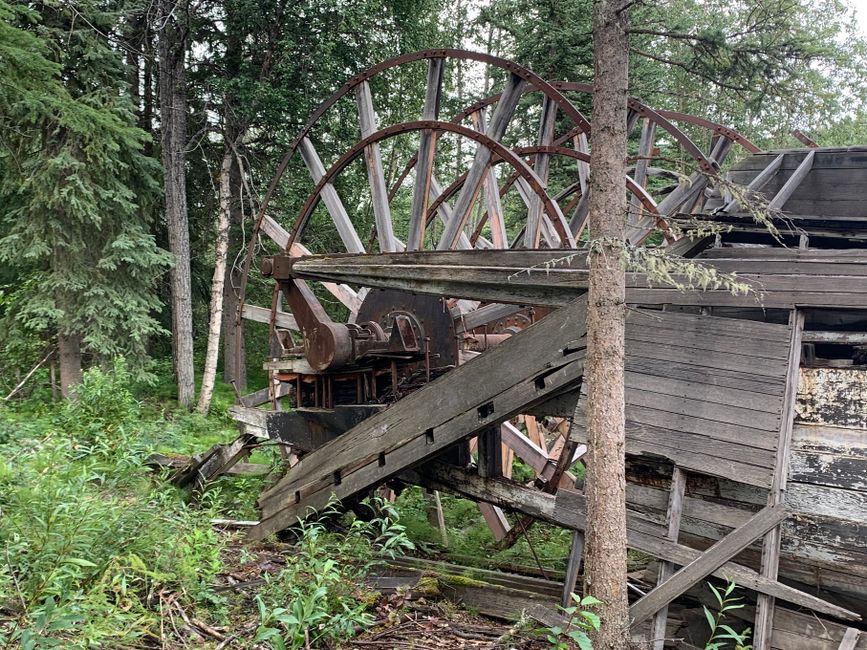
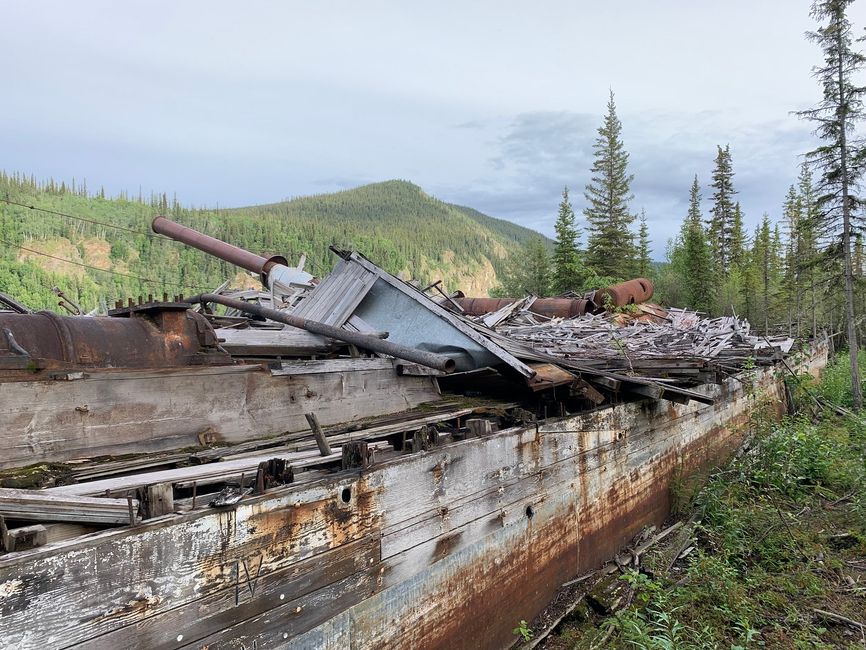
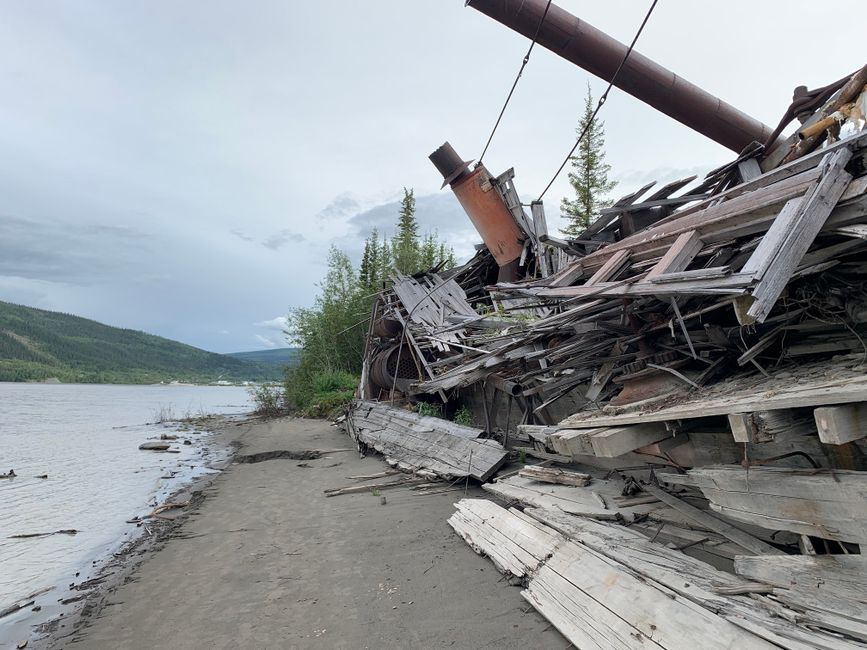
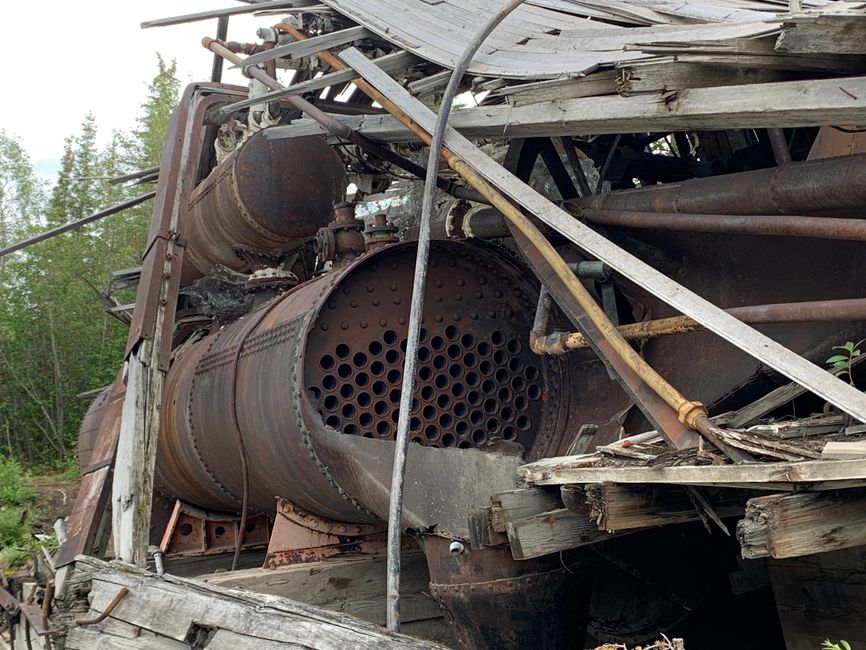
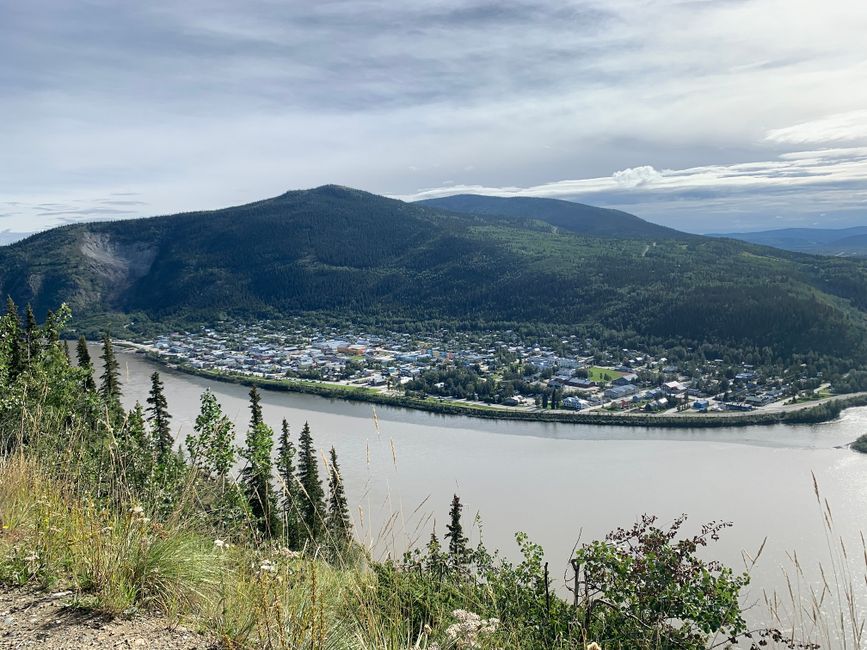
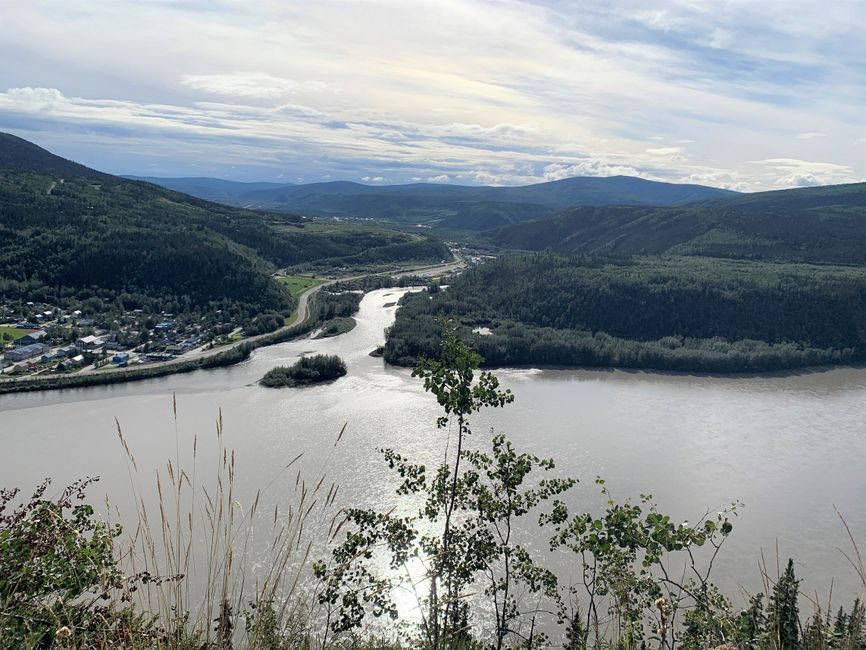
Newsletter abonnieren
DAWSON CITY – Gold Rush Town
Auf dem Klondike Highway mit seinen vielen Baustellen, bei denen man geduldig auf den „Pilote Car“ warten und diesem dann folgen muss, geht’s Richtung Dawson, durch eine praktisch menschenleere Gegend. Immer wieder sind die Spuren von Waldbränden zu sehen.
Bei der Einfahrt nach Dawson City sieht man im Klondike Tal die „Tailings“ der Dredges – dazu später etwas Info.
Die Siedlung wurde 1896 zu Beginn des legendären Klondike-Goldrauschs gegründet.
1897 / 98 konnte Dawson City nur zu Fuß über den White Pass oder den berüchtigten Chilkoot Trail und danach über den gefährlichen Flussweg über den Yukon per Floß oder Kanu erreicht werden. Es sollen sich etwa 100.000 Glücksritter vor allem ab Skagway auf den Weg gemacht haben, 30.000 haben es bis Dawson geschafft und insgesamt nur etwa 500 Personen wurden „reich“ durch Goldfunde. 1898 hatte die Einwohnerzahl mit über 40.000 Menschen ihren Höhepunkt erreicht. Schon ein Jahr später lebten nur noch 8.000 Einwohner dort, 1902 nur noch 5.000 - heute sind es etwa 1.300 Menschen.
Der erste Goldrausch nach dem reichen Fund am Bonanza Creek 1896 führte zu chaotischem Vorgehen – es kostete 1 Dollar um für 2 Dollar Gold herauszuholen und mindestens 1 Dollar blieb im Boden. Bereits 1899 waren die besseren Claims für die „Handarbeit“ – Waschen mit Goldpfannen – erschöpft und die Goldjäger Karawane zog weiter den Yukon hinab, Nome in Alaska war das neue Ziel der Hoffnungen.
Den Experten und Investoren war klar, dass bei industrieller „Nacharbeit“ und Bearbeitung von nicht so ertragreichen Claims mit entsprechenden Maschinen, immer noch ein schöner Profit zu machen würde. Die Guggenheims und andere investierten ab 1900 in die Konsolidierung der Claims und die gigantischen Dredges, die den goldhaltigen Boden bis 1950 komplett umpflügten und die Natur zerstörten, wovon die „Tailings“ im Klondike Tal oberhalb von Dawson noch heute Zeugnis ablegen. Insgesamt waren gegen 20 dieser Giganten rund um Dawson im Einsatz.
Bei unserer Reise in 2016 haben wir den Bonanza Creek und die Dredge Nr.4 (3000 t schwer, und 8 Stockwerke hoch) besucht. Diese Bilder stammen von damals.
Dawson City lebt heutzutage vom Fremdenverkehr und etwas von den noch aktiven Goldsuchern – es gibt einige schön restaurierte Bauten zu sehen und man kann seine Vorräte ergänzen. Wir besichtigen auch die SS Keno, ein kleinerer Schaufelraddampfer, der vor allem für den Transport von Silber, Zink und Blei Erz am Stewart River von Mayo bis zur Mündung in den Yukon eingesetzt wurde – dort wurden die Erze auf stromaufwärts nach Whitehorse immer fast leer fahrenden Yukon Dampfer umgeladen.
Mit der kostenlosen Fähre geht’s für uns (nach 2 Stunden Wartezeit) über den Yukon, stromabwärts von Carmacks gibt es bis zur Mündung keine Brücke mehr. Bevor wir vom Beginn des „Top oft he World“ HWY nochmals einen schönen Blick auf Dawson City und die Mündung des Klondike in den Yukon werfen, besuchen wir noch den „Paddlewheeler Graveyard“. Hier wurden nach der Fertigstellung der Strasse vor 70 Jahren sechs oder acht Raddampfer aufs Land gelegt- und dort „vergessen“..
DAWSON CITY—Gold Rush Town
On the Klondike Highway with its many construction sites, where you have to wait patiently for the "Pilote Car" and then follow it, we are heading towards Dawson, through practically unpeopled land. Often traces of forest fires can be seen.
At the entrance to Dawson City you can see the "tailings" of the dredges in the Klondike Valley - more info on that later.
The settlement was established in 1896 at the start of the legendary Klondike Gold Rush.
In 1897-98 Dawson City could only be reached on foot via White Pass or the infamous Chilkoot Trail and then via the dangerous river route along the Yukon by raft or canoe. About 100,000 soldiers of fortune are said to have started their way, mainly from Skagway. 30,000 made it to Dawson and a total of only about 500 people became "rich" through gold discoveries. In 1898 the number of inhabitants had reached its peak with over 40,000 people. A year later only 8,000 inhabitants lived there, in 1902 only 5,000 - today there are about 1,300 people.
The first gold rush after the rich finds at Bonanza Creek in 1896 led to chaotic operations - it cost $1 to get $2 gold and at least $1 remained in the ground. Already in 1899, the better claims for the "manual work" - washing with gold pans - were exhausted and the gold hunter caravan continued down the Yukon, Nome in Alaska was the new target of hopes.
It was clear to the experts and investors that with industrial "rework" and processing of less profitable claims with appropriate machinery, a nice profit could still be made. In 1900 the Guggenheims and others invested in the consolidation of claims and the gigantic dredges that completely plowed the gold-bearing soil and destroyed nature until the 1950s, as evidenced by the "tailings" in the Klondike Valley above Dawson today. In all, around 20 of these giants were deployed around Dawson.
During our trip in 2016 we visited Bonanza Creek and Dredge No.4 (3000 t and 8 stories high). These pictures are from back then.
Dawson City now thrives on tourism and some of the still active prospectors - there are some beautifully restored buildings to see and you can stock up here.
We also visit the SS Keno, a smaller paddle wheeler used primarily to transport silver, zinc and lead ore down the Stewart River from Mayo to its entry in the Yukon - there the ores were transshipped to the Yukon steamers travelling upstream to Whitehorse running low on freight.
We take the free ferry (after a 2-hour wait) across the Yukon, downstream from Carmacks there is no bridge to the mouth. Before we take another nice look at Dawson City and the mouth of the Klondike in the Yukon from the beginning of the "Top of the World" HWY, we visit the "Paddlewheeler Graveyard". Here, after the completion of the road 70 years ago, six or eight paddle steamers were laid on land - and "forgotten" there….
Newsletter abonnieren
Antworten
